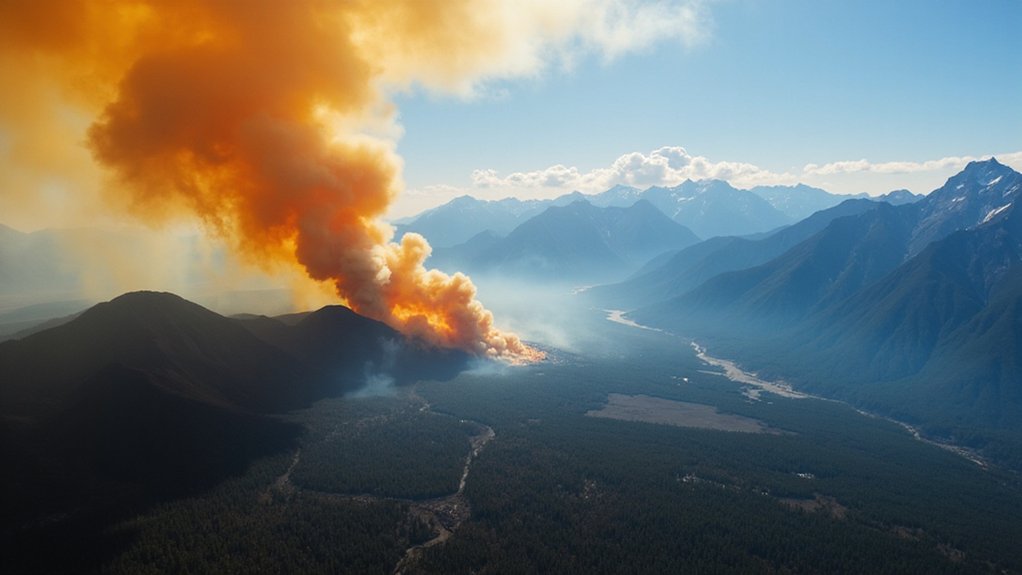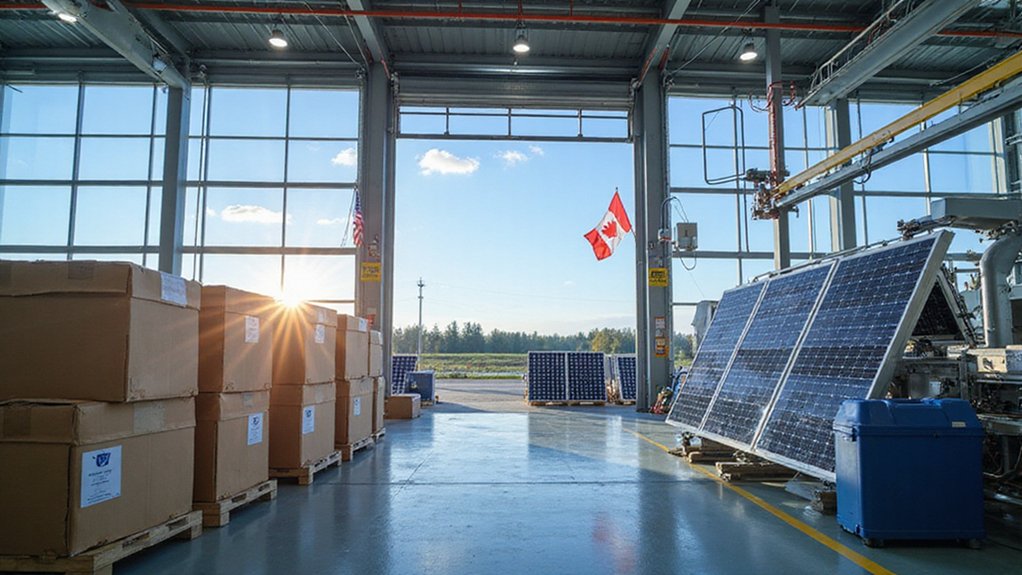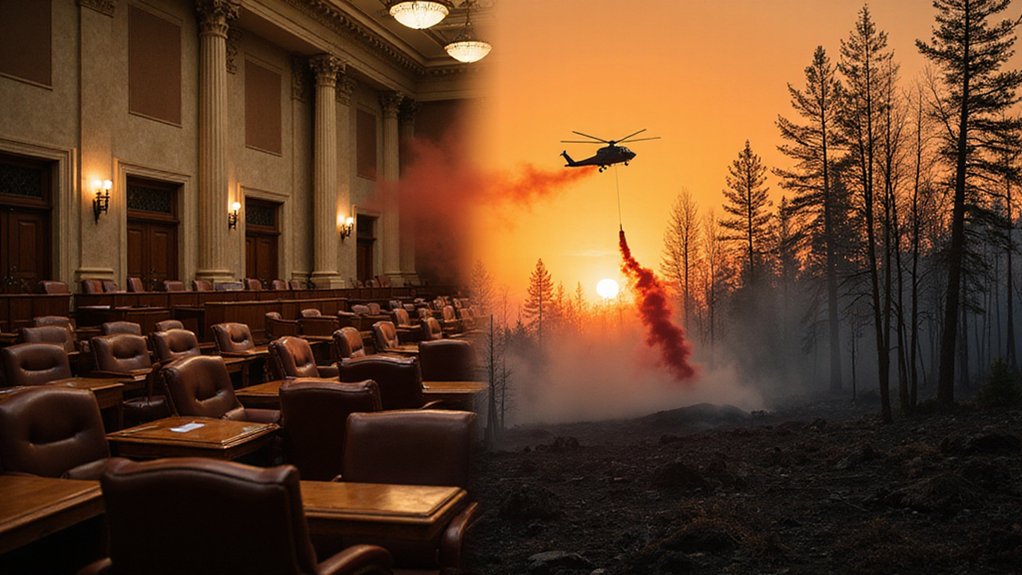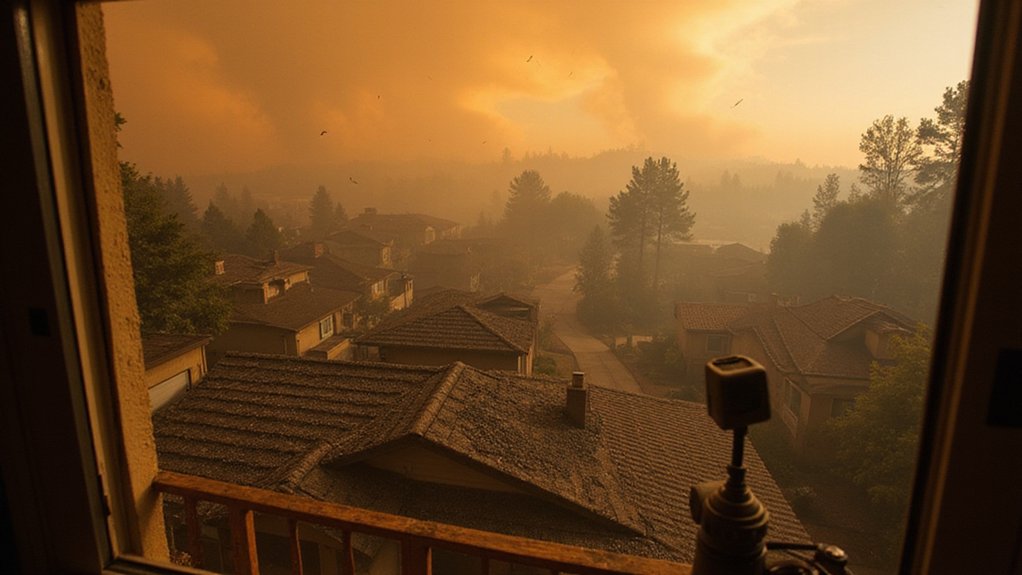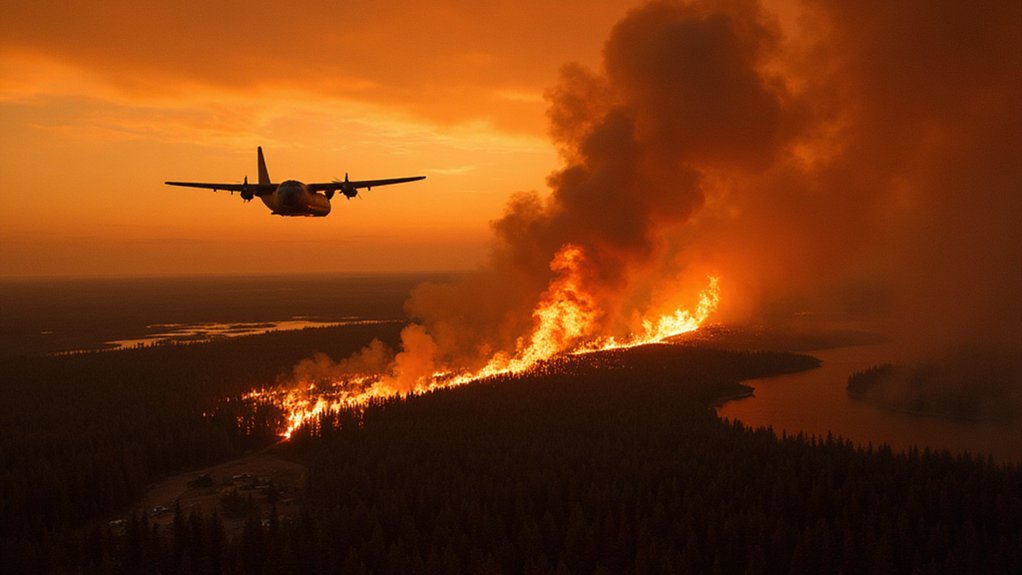Flames of unprecedented fury swept across Canada in 2023, shattering every wildfire record on the books. This wasn’t your average fire season—it was a five-alarm nightmare that torched 18.5 million hectares. That’s 5% of Canada’s forests gone. Poof. The previous record? Demolished by 2.5 times. The long-term average? Multiplied by six. We’re talking megafires—hundreds of them exceeding 10,000 hectares each. North America had never seen anything like it.
Canada’s 2023 wildfire season wasn’t just record-breaking—it was apocalyptic, obliterating forests at an unprecedented scale.
No province or territory escaped. East, west, north—didn’t matter. The fires didn’t discriminate. They started early, ended late, and turned the map of Canada into a connect-the-dots of disaster zones. Alberta, British Columbia, Quebec—all got their fair share of nature’s wrath. The smoke didn’t respect borders either, drifting south into American airspace like an uninvited guest.
The human cost was staggering. Eight firefighters never made it home. Up to 232,000 people had to grab what they could and flee. Halifax saw 16,400 residents evacuated. Yellowknife? 21,720 displaced. Nearly 30,000 people in British Columbia’s Kelowna area watched as flames threatened their communities. Nothing like an impromptu camping trip when your house might be burning down.
International firefighters flooded in. Resources stretched thin. Everyone working overtime. The Canadian Interagency Forest Fire Centre probably didn’t get much sleep coordinating the nationwide response. Interagency mobilization data shows peak aircraft mobilization reached an unprecedented 1125.2 during the height of the crisis.
British Columbia got hit particularly hard—2.84 million hectares burned, or 10 times their 20-year average. Just another casual decimation of the terrain. The fires occurred during what scientists confirmed was the hottest year on record globally, intensifying the already dangerous conditions.
The environmental aftermath? Roughly 7.8 million hectares of forest turned to ash. Carbon dioxide and particulates spewed into the atmosphere. Air quality tanked across half the continent. The ecosystem impacts will linger for decades. Trees don’t exactly grow back overnight.
When compared to previous record years—1989, 1995, 2014—the 2023 season makes them look like campfires. Seven times the historical average. Not exactly the kind of record Canada was hoping to set. Scientists point to anthropogenic climate change as the primary driver behind the unprecedented intensity of these wildfires.
References
- https://en.wikipedia.org/wiki/2023_Canadian_wildfires
- https://cwfis.cfs.nrcan.gc.ca/report/graphs
- https://www.wri.org/insights/canada-wildfire-emissions
- https://ciffc.ca/sites/default/files/2024-03/03.07.24_CIFFC_2023CanadaReport (1).pdf
- https://earthobservatory.nasa.gov/images/151985/tracking-canadas-extreme-2023-fire-season
